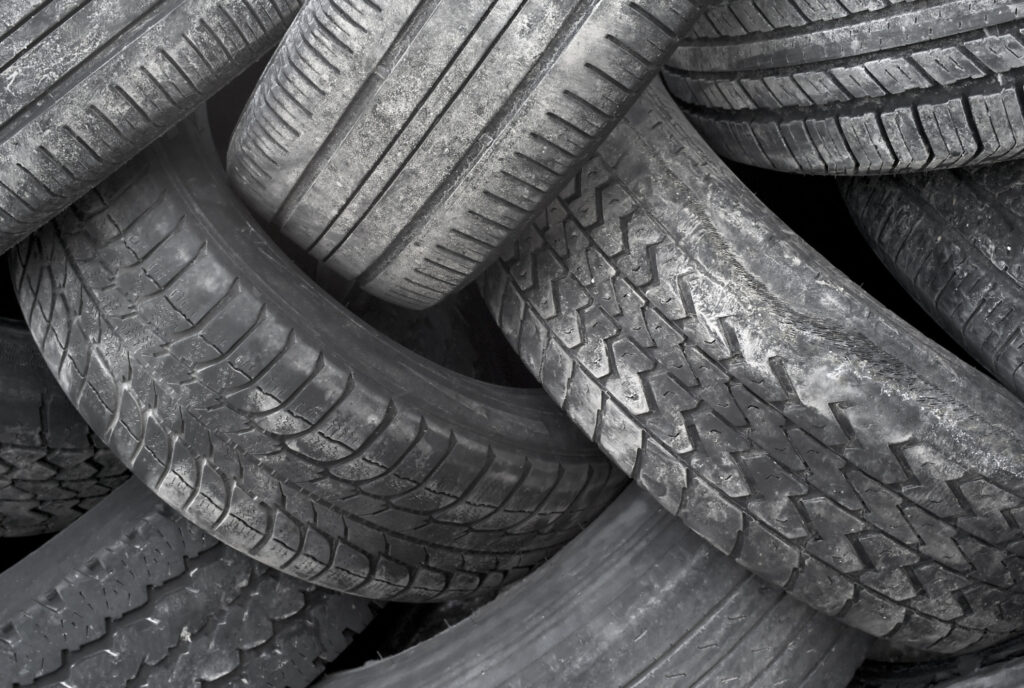Remain on the case with a formal tire program, speakers stress
Any fleet maintenance team that wants to control costs will need to remain on the case, particularly when it comes to tires.
“Casings are valuable assets to your tire program,” stressed Jamie Redmond, a customer engagement specialist at Goodyear, during a recent presentation for the Electric Utility Fleet Managers Conference (EUFMC). Even fleets that don’t actively retread their own tires can sell undamaged casings to local suppliers.
There’s an environmental consideration, too, he said. It takes 22 US gallons of oil to make a new 22.5-inch commercial tire. Retreads take 7 US gallons.

A close look at the scrap pile can help identify the recurring reasons behind many failures – and point fleets toward preventive measures and refined procedures that will give casings the best chance at another life.
“I always thought the rubber on the road was from retreads,” admits Goodyear product marketing manager Dustin Lancy. But the Tire Retread Information Bureau found that 57% of the so-called ‘gators were from new tires. Sure, some of the damage can be traced to road hazards, but other failures are linked to issues like underinflated tires that flex too much, overloaded vehicles that stress casings, and damage linked to mounting procedures.
Andrew McCulloch and Sagar Pokhrel, both field engineers with Michelin North America, pointed to several issues and causes.
T-shaped ruptures can be traced to impact-related damage. But creases along the flexible areas of a tire sidewall can indicate tires that were allowed to run while flat. Broken casing plies point to pinch shocks caused when tires hit curbs or potholes, and maintenance teams will be able to feel the crease or dent behind the related damage.
The run-flats can be caused if a tire is punctured by a nail, but also if the tire bead is damaged during a repair, or if leaky valves are not addressed. Maybe some debris was left between the bead and the wheel during the mounting process.
Prevent some of the underlying issues, and there is almost certainly a reduction in the roadside failures that lead to costly service calls and unscheduled downtime.
“A successful tire program starts with proper tire mounting,” Pokhrel says.
But the program extends beyond that.
Maintaining proper tire pressures is obviously one of the keys to longer tire life. Underinflation will cause the tire to flex and generate damaging heat. Too much pressure will leave a tire more prone to impact-related damage and stone drilling. The proper inflation gives the tire the best footprint and optimizes traction. It will also play a role in matching dual tires.
“Tire pressure is often the root of tire maintenance issues,” says Austin Crayne, business development lead at Goodyear. The U.S. Federal Motor Carrier Safety Administration (FMCSA) found that half of all over-the-road breakdowns are related to tire maintenance. Of those, 85% are due to improper inflation.
Turning to research by the American Trucking Associations’ Technology and Maintenance Council (TMC), he notes that a tire constantly underinflated by 20% will see treadwear increase by 25%, and tire life drop by 30%.
New technologies can help. Connected tire pressure monitoring systems – mounted on tires, wheels, or valve stems – will trigger alerts for temperature, pressure and leaks. While many were designed as standalone systems, they are evolving to share data to reduce the need for multiple dashboards, too. Automated inspection systems will even capture data as wheels roll over the plates, feeding fleet management systems.
And when powered with the right data, maintenance teams will have the best chance to make informed decisions.
Have your say
This is a moderated forum. Comments will no longer be published unless they are accompanied by a first and last name and a verifiable email address. (Today's Trucking will not publish or share the email address.) Profane language and content deemed to be libelous, racist, or threatening in nature will not be published under any circumstances.
what’s the life span of a tire transporting 35tons daily in km, from new to rethreading.